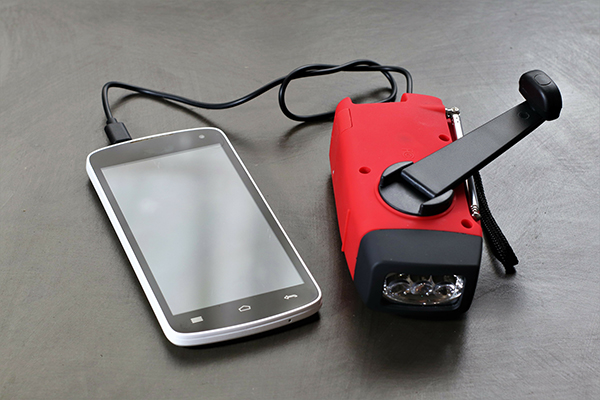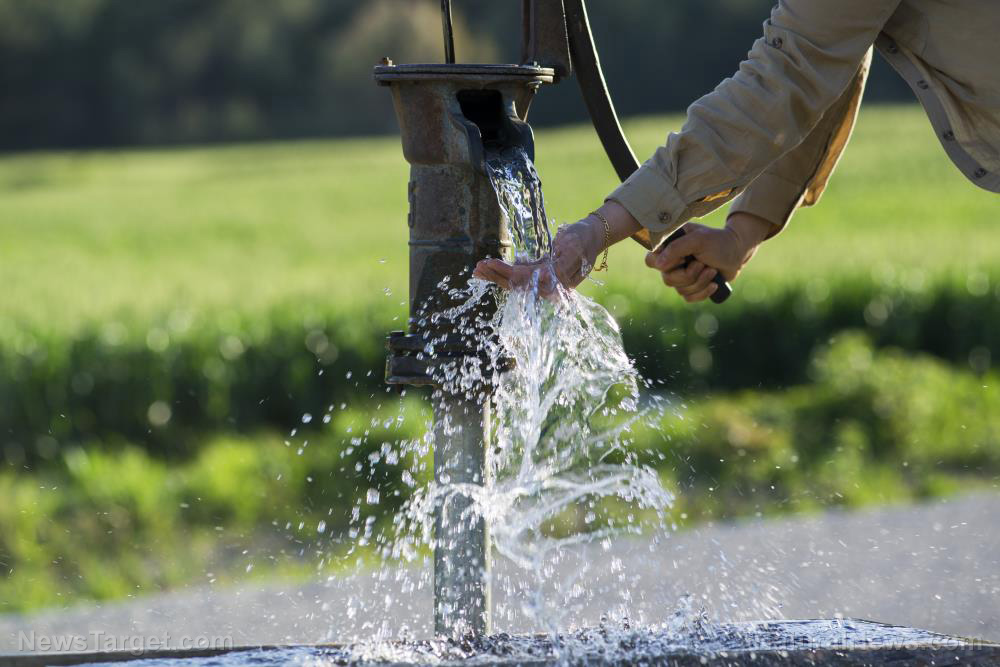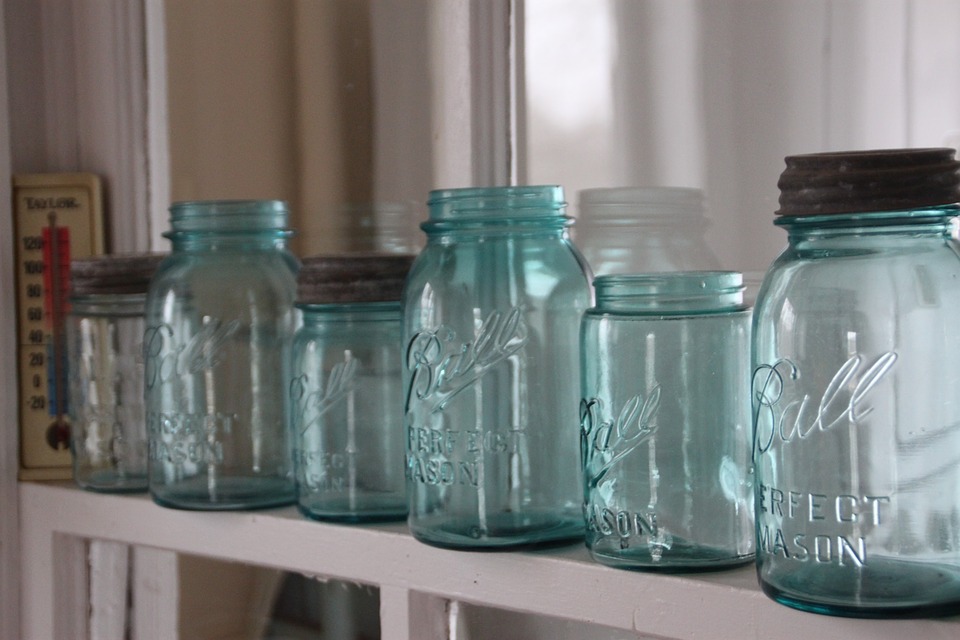Survival first aid: How to treat knife injuries when you can’t call 911
02/21/2023 / By Zoey Sky

Most prepper kits include a survival knife for various uses. However, knife wounds are among the most common wilderness injuries and there is also the risk of stab wounds.
When disaster strikes, you won’t always be able to call 911. Before SHTF, you should learn how to properly treat a knife injury or stab wound to prevent infections. (h/t to PrimalSurvivor.net)
Help the victim lie down
Knife wounds are unusual because victims don’t always notice their injuries until later due to a surge of adrenaline and extreme stress. If you’re the one administering first aid, you can take advantage of the patient’s initial shock period and get them to lie down.
Doing this has some benefits:
- Depending on the location of the injury, the patient won’t be able to see the knife wound while lying down. This will help them stay calm.
- It can help reduce the risk of injury from falls due to dizziness.
- It will help stabilize the patient.
But there are some exceptions to this rule. For example, you shouldn’t put knife wound victims on their backs if the wound is located on their back or if lying down would affect their airways. (Related: Survival medicine: Healing herbs for your first aid kit.)
Before SHTF, make sure your first aid kit includes the following supplies so you can treat knife wounds properly:
- Alcohol/alcohol pads/antibacterial hand sanitizer
- Antibiotic ointment
- Antiseptics for preventing infections
- Butterfly bandages
- Chest seals
- Cotton elastic bandage
- Gauze pads
- Gloves
- Hydrogen peroxide
- Rolled gauze
- Safety pins
- Silk medical tape roll
- Tourniquet
- Trauma shears
- Triangular bandages
- Tweezers
- Wound irrigation syringes
Remove the clothing around the wound
You should have a pair of trauma shears in your first aid kit so you can safely remove any clothing around the patient’s knife wound. If you don’t have scissors in your survival first aid kit, carefully use your survival knife.
Put on gloves or wash your hands
Always wash your hands before treating knife wounds. If possible, put on gloves. Using gloves will also help prevent wound infection.
If you don’t have gloves in your kit and no access to soap and running water, clean your hands with alcohol or antibacterial hand sanitizer.
Try to control the bleeding
The amount of blood in your body depends on your age and size. According to the National Institutes of Health (NIH), a man who weighs 154 pounds has between five to six liters of blood in his body.
A smaller woman might have between four to five liters of blood in her body.
Hemorrhagic shock begins when a patient loses about 20 percent (one-fifth) of their body’s blood or fluid supply. Once this happens, their heart isn’t able to pump sufficient amounts of blood through their body.
Also, if the knife wound hits an artery, the rate of blood loss can be very fast. Fatal exsanguination from an arterial wound may only take 20 seconds to several minutes.
Venous bleeding could also cause death within four to five minutes if the injury is large enough.
Types of bleeding:
- Arterial bleeding – Blood will be spurting out from a knife wound. The blood will be bright red.
- Capillary bleeding – The blood will slowly come out and it will eventually stop on its own.
- Venous bleeding – The blood will be oozing out and it will be a darker color.
Apply pressure to the wound
Applying pressure to the wound will help stop the flow of blood.
If you are treating arterial bleeding, you will have to apply pressure to the major artery leading to the wound. Use both hands.
For example, if the knife wound is in the thigh, apply pressure to the femoral artery. Applying 10 to 15 minutes of direct pressure should help control the bleeding of most wounds when SHTF.
Reposition the victim
The heart pumps blood throughout the body. If the wound location is below the heart, the patient will experience blood loss faster.
To prevent this, position the victim so the wound location is above the heart. This means if the knife wound is in the leg, help the patient lie down and elevate the legs.
Properly seal sucking chest wounds
Getting stabbed in the chest and having the knife penetrate the lungs is one of the worst possible knife wounds. When this happens, the outside air entering the lung will cause it to collapse, and the victim will die quickly.
When dealing with these types of knife wounds, you must seal the wound ASAP to prevent air from getting into the lung.
Do this by putting any of these items over the wound:
- A plastic bag
- A credit card
- Duct tape
- Your hand
Even with this step, the victim may experience complications from pressure buildup. This is why you need a chest seal in your first aid kit.
When to use a tourniquet
Studies suggest that early use of a tourniquet can be beneficial when trying to stop severe bleeding.
However, there are some potential complications so it’s best to learn how to apply a tourniquet properly.
Dos and don’ts before removing the knife
Normally, you shouldn’t remove the knife if it’s still in the victim’s wound. But when you can’t call 911, you might need to remove it.
However, before you remove the knife you must be ready to stop the blood flow, which could start gushing out immediately.
Clean the knife wound
Once you have stopped the bleeding, you need to clean the wound properly to prevent infection.
Cleaning an injury is an essential part of first aid, but it is vital when you can’t call for professional medical help. If a wound isn’t cleaned properly, an infection may develop into gangrene or spread throughout the body.
Dilute the wound site to get out any contaminants that may cause infection.
- Use tweezers to remove large pieces of debris stuck in the wound.
- Use at least one liter of fluid to clean the wound.
- Saline solution is best for cleaning wounds. If you don’t have a saline solution, use boiled, sterile water. Let the boiled water cool down before flushing the wound.
- Direct the fluid at a perpendicular angle from at least one to two inches from the wound.
- Use enough force to dislodge any foreign debris in the wound, but don’t apply too much pressure so that the tissue will be damaged or the debris will get pushed deeper into the wound.
Apply copious amounts of antibiotic ointment over the wound. This will help prevent infection and prevent the dressing from sticking to the wound.
Remember that antibiotic ointments aren’t a substitute for cleaning a wound. Flush the wound carefully before applying antibiotic ointment.
Decide if you’re going to close the wound
Under normal circumstances, if you can take the patient to the hospital, it’s not advisable to close a knife wound. This can trap bacteria and other contaminants in the wound, which can cause infection.
But when treating a wound, closing the wound will reduce airspace, prevent further contamination and help speed up healing. If a wound is closed and develops an infection, the pus won’t be able to drain, which can then result in a life-threatening illness.
This means the safest way to treat a knife wound is to leave it open.
Leave a knife wound open if:
- The wound is infected.
- The wound was exposed to the air for longer than six hours
- There is dead tissue in the wound. Dead tissue is discolored and won’t bleed.
- The edges of the wound are too far apart that closing it would tear the skin or put pressure on the skin.
Close a knife wound if:
- The wound is large and you can’t stop the bleeding.
- The wound penetrated through the entire skin and you can see underlying tissues.
- The wound has been open for less than six hours.
- The wound is over a joint or moving part of the victim’s body and won’t close by itself.
- The wound is gaping open and won’t be able to close without your intervention.
Open wounds
An open wound doesn’t mean leaving it open to the elements. When caring for an open wound, you must dress it properly to prevent contaminants from entering it. This also prevents bacteria from entering the wound through the air.
Closing wounds
Let the wound dry before closing it. Use butterfly bandages to close the wound.
If you don’t have butterfly bandages, use pieces of adhesive tape to make a butterfly closure. Avoid using tape to cover the closed wound because removing the tape may damage the wound further.
Monitor the wound
A wound left open or closed must be monitored for signs of infection.
If an open wound has developed a severe infection, the victim’s skin will become very painful and harder. Their skin will also turn bright red or become hot to the touch. Clean the wound again.
Closed wounds also need to be monitored. If the wound area swells up, gets red and crusty or starts to smell bad, the patient has developed an infection. Reopen the wound and clean it again. Leave the wound open and monitor it for signs of a worsening infection.
Before SHTF, learn how to treat knife injuries so you can treat yourself or someone else with a stab wound.
Watch the video below for tips on how to pack a first aid kit for your everyday carry kit (EDC kit).
This video is from the Geordie Prepper channel on Brighteon.com.
More related stories:
Prepper essentials: What to include in your SHTF first aid kit.
Prepare before SHTF by learning how to manage first aid emergencies in austere environments.
Surviving a gunshot wound: What to do if you get shot.
Sources include:
Submit a correction >>
Tagged Under:
bug out, chaos, emergency medicine, first aid, homesteading, knife injuries, off grid, panic, preparedness, prepper, prepping, SHTF, stab wound, survival, survival medicine, Survival Tips
This article may contain statements that reflect the opinion of the author
RECENT NEWS & ARTICLES
Homesteading.News is a fact-based public education website published by Homesteading News Features, LLC.
All content copyright © 2018 by Homesteading News Features, LLC.
Contact Us with Tips or Corrections
All trademarks, registered trademarks and servicemarks mentioned on this site are the property of their respective owners.




















